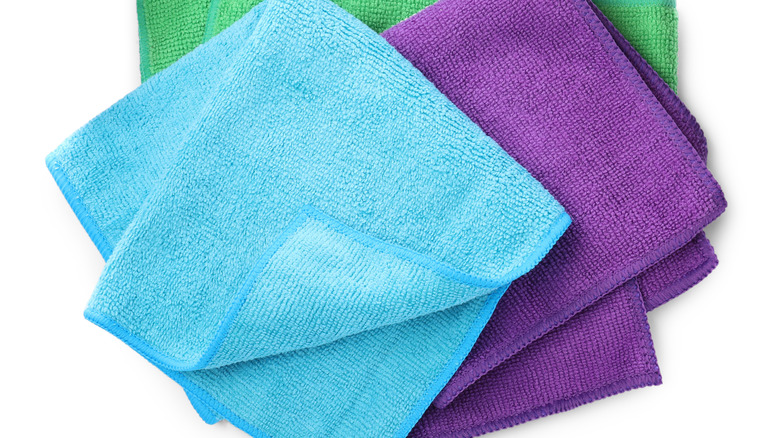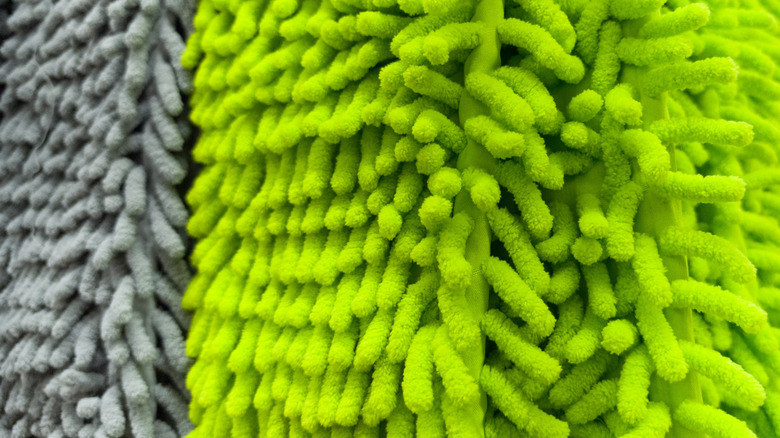What Are Microfibers Actually Made Of?
If you've ever grabbed a cloth designed to clean your glasses or computer screen, it's likely you were using a microfiber product (and you've probably used them in a ton of other situations from car upholstery to underwear). Microfiber is a type of man-made fiber made from synthetic materials. The most commonly used materials are polyester and polyamide, but others like viscose and acrylic also work. It's called "microfiber" because of the narrow diameter of its fibers, measuring only 1.0 to 1.3 denier:Substantially finer than human hair, with a diameter half that of fine silk. To create these ultra-thin fibers, several manufacturing processes can be used, including electrospinning, melt electrospinning, and flash spinning.
The origins of microfiber date back to the 1950s (though electrospinning was proposed as early as the 1930s) when textile manufacturers were researching various methods to create very thin fibers. Achieving some success but unable to produce a consistent length of the fibers, manufacturers shifted away from using the melt-spinning process used to produce other synthetic fibers. Additionally, bicomponent polymers (blends) were gaining in popularity: Two different fibers are extruded together as a single filament that proved stronger than either single filament. This reduced breakage of thin textile fibers during the extrusion process.
By the 1960s, Toray Industries, a leading Japanese textile company, made significant improvements to the quality of microfiber, leading to its mass production, especially for Ultrasuede. First used by fashion industry the 1970s for, Ultrasuede became a hit and is now used for many applications. Similarly, the use of microfiber cloth has evolved, wherein today it can also be used to clean a wide range of items, from electronics to vehicles, whereas originally, it was largely used for cleaning high-precision lenses.
Microfibers make more efficient cleaning material
Because of its composition and how it is made, microfiber has several properties that exceed those found in natural fibers, like cotton. Some of its important attributes include high absorbency, rapid drying, durability, and stain and bacteria resistance. In addition, microfiber is hypoallergenic, non-electrostatic, and unlikely to wrinkle and shrink. It is due to these characteristics that, aside from textile application, microfiber is used extensively for industrial purposes, acting as a filtration or insulation material, and for upholstery. The material has also found use in the medical field, where microfiber membranes help in wound care, tissue growth, and slow release drug delivery.
The most popular use of microfiber has been as a cleaning material based on its ability to quickly and efficiently tidy up various surfaces. Compared to cotton cloth, microfiber works better in absorbing liquids, trapping dirt, and removing grime, and can clean effectively even without water or cleaning agents. The reason why microfiber works better than cotton cleaning cloths comes from its very fine threads that greatly increase its surface area, allowing it to capture more dirt particles and clean with a streak-free finish.
To get the best results when using it, it is important to know the proper cleaning process to avoid making mistakes when using microfiber cloth. Alongside this, learning correct maintenance for microfiber is also vital, because while it is durable, it is also essential to clean microfiber cloths after each use to help maintain longevity. Before washing, any dirt or debris should be shaken loose and rinsed with warm water. Next it should be washed in lukewarm water on a gentle cycle, without fabric softener or bleach, which could damage the microfiber cloth.
Importance of minimizing environmental impact
As a consequence of its success as a cleaning material, the demand for microfiber continues to grow. Together with domestic users, many industries, including automotive, healthcare, and hospitality, lean on microfiber for its cleaning ability. This regular need for microfiber can become a concern in terms of its environmental impact. As a synthetic textile, microfiber is non-biodegradable and contributes to pollution by releasing microplastic fibers during its production, washing, and disposal. These microplastics contaminate the environment when they entere bodies of water, which can then endanger aquatic life and eventually human health.
Despite not being totally environmentally friendly, there are ways in which microfibers help the environment. Because of its durability, microfiber can be used for a long time, lessening the need for frequent replacement. For liquid spills, microfibers can remove the need for paper towels, thus saving trees. And cleaning with microfiber reduces water and chemical use, lessening both consumption and chemical pollution.
Microfibers represent a significant development in the creation of new materials. Due to the many advantages in a variety of applications, microfiber has become an important material used across numerous industries and households worldwide. Notwithstanding its advantages, it is important to keep in mind its potential ecological impact, and minimize how it contributes to pollution, including more efficient washing — including using microfiber-catching devices like washbags when doing laundry — and proper disposal by taking microfiber to recycling centers that accept it, or to companies that can reuse it.


